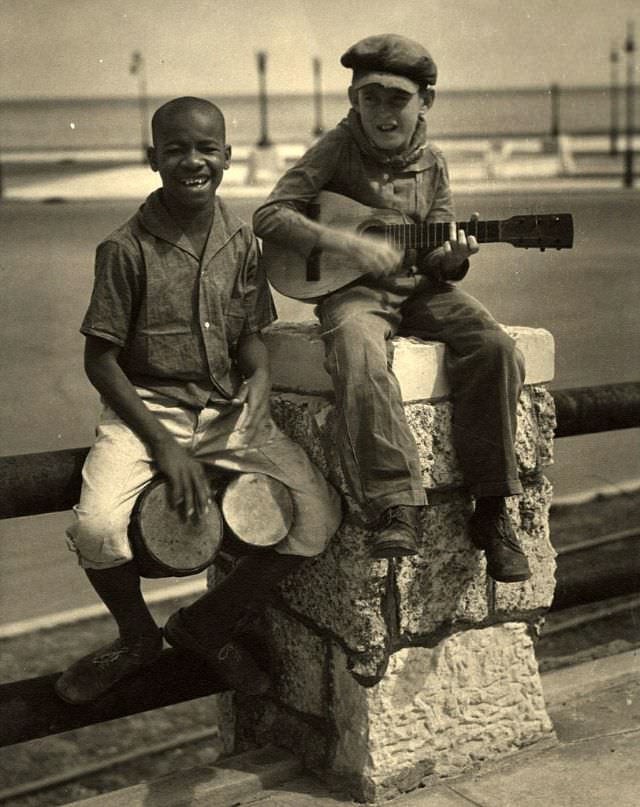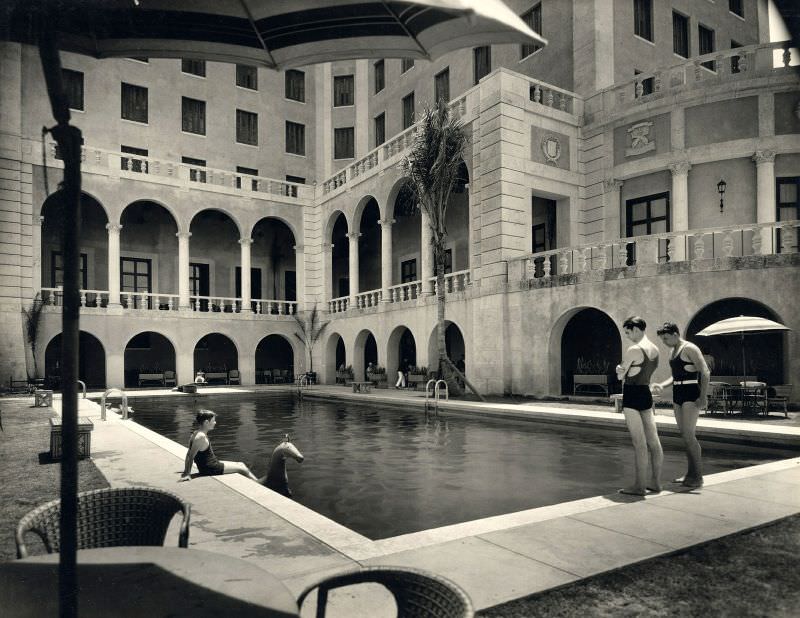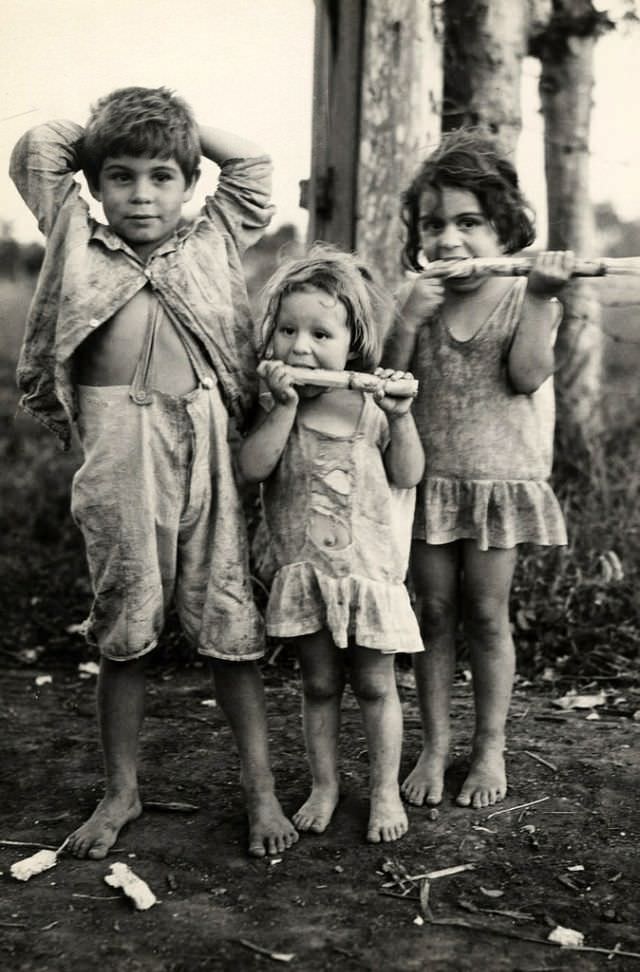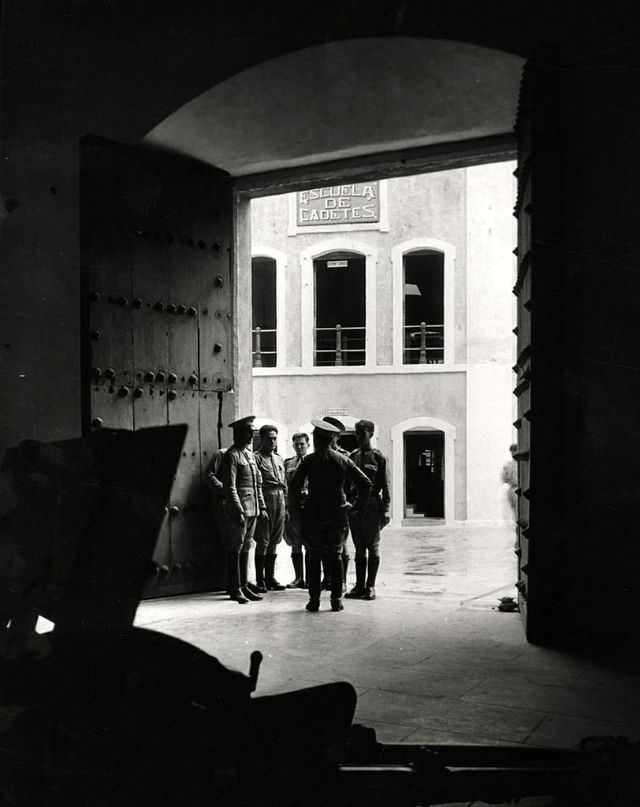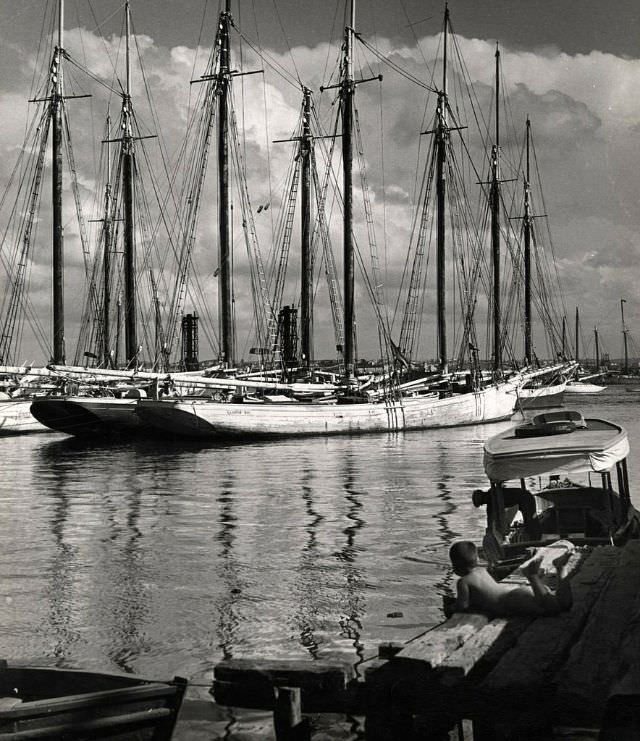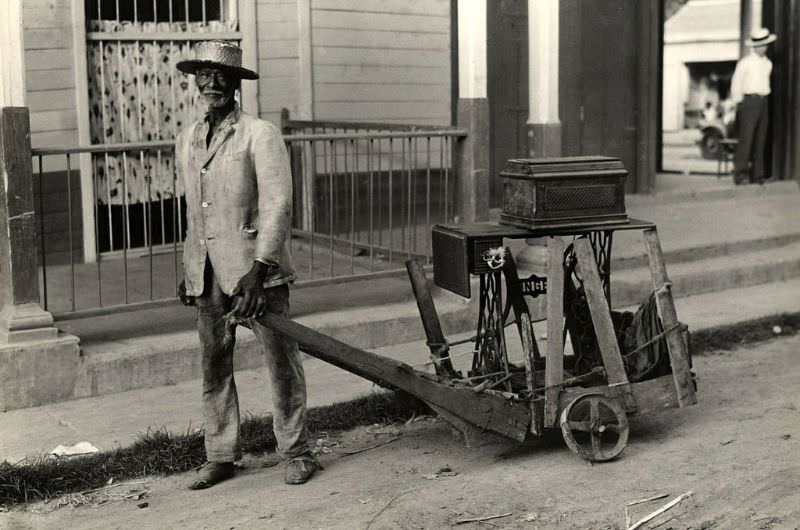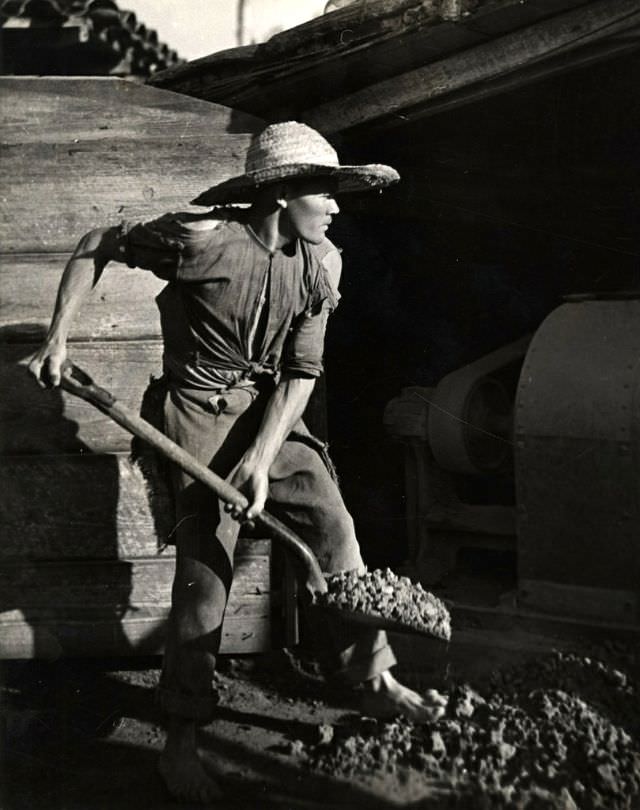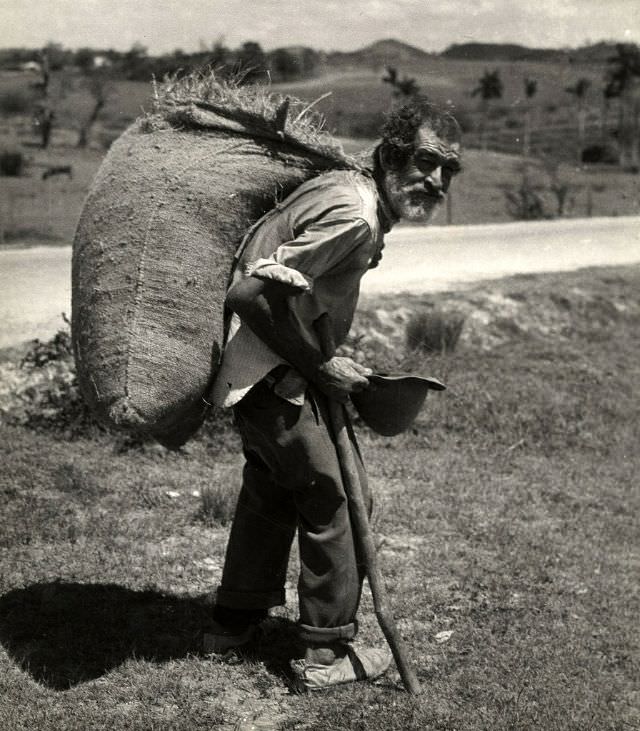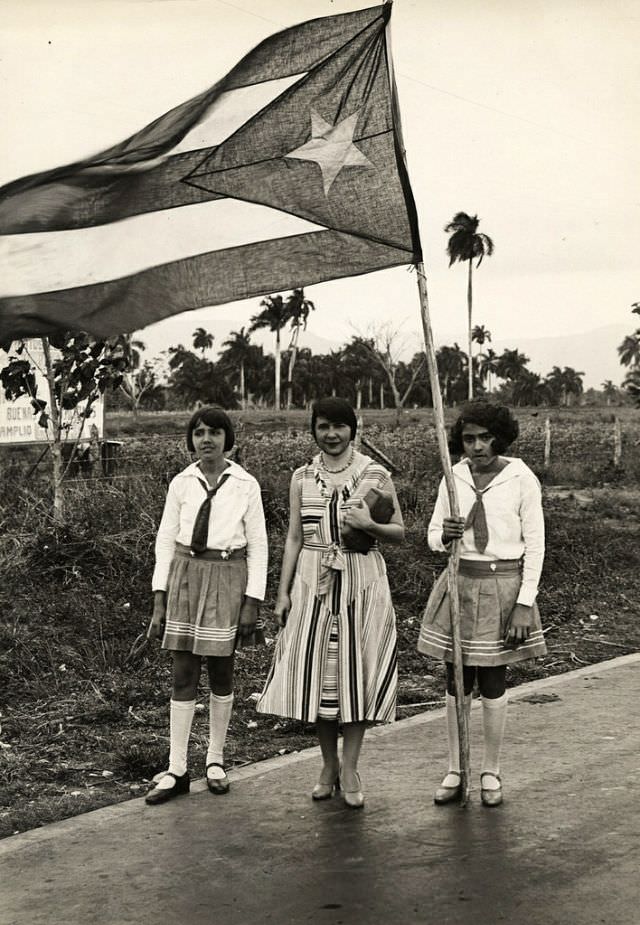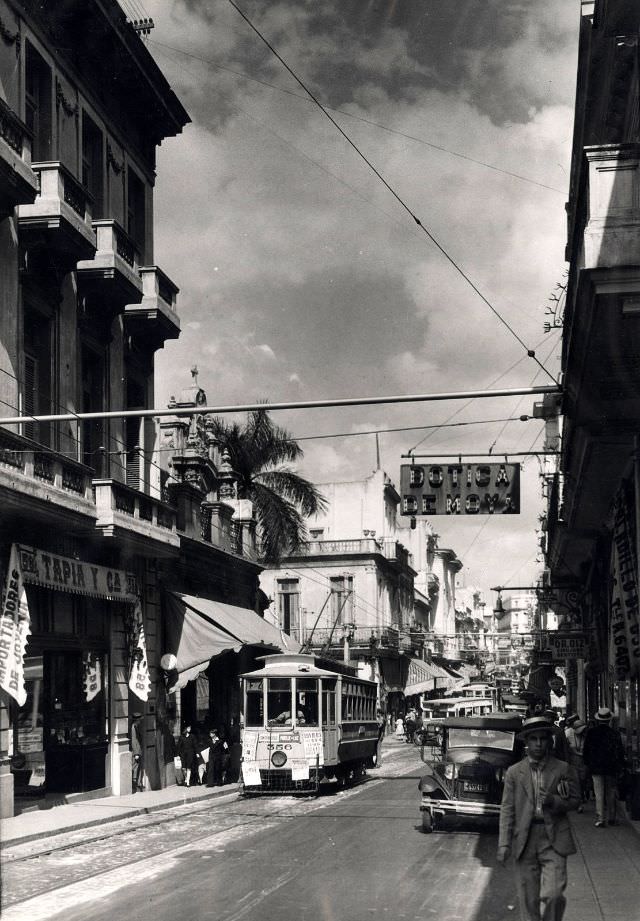Fay S. Lincoln, a talented photographer and adventurer, traveled to Cuba in 1933 and documented the daily lives of Cubans during a time of political unrest and economic challenges. Through his striking black-and-white images, we can catch a glimpse of the island’s culture, people, and landscapes as they existed nearly a century ago.
The captivating photographs reveal a Cuba that was both vibrant and resilient, despite the struggles faced by its people. We can see the bustling streets of Havana, with children playing, street vendors selling their goods, and classic cars navigating the narrow roads. The city’s beautiful architecture, a blend of Spanish colonial, neoclassical, and art deco styles, serves as a stunning backdrop to these everyday scenes.
Lincoln’s images also transport us to the Cuban countryside, where farmers tended to their fields, growing crops like tobacco and sugarcane. Fishermen can be seen casting their nets into the azure waters, while families gather around their modest homes, sharing stories and laughter.
A sense of community and camaraderie permeates the photographs, demonstrating the Cuban people’s ability to find joy and solace in their shared experiences. Music and dance, integral to Cuban culture, provide a sense of unity and escape from the daily challenges faced by the people.


